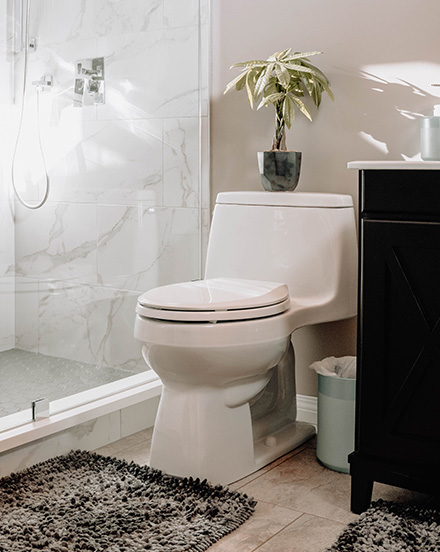How often do you change your bathroom routine? For most people, bathroom habits don’t change much from their early years, but that doesn’t mean they shouldn’t. Recently, there has been a significant rise in interest for the bidet, a bathroom accessory with several variations and benefits.
Understanding Bidet Designs
A bidet is a sanitation tool for personal cleaning. Rather than using toilet paper, a person uses the stream of water produced by the bidet to clean their hindquarters. The bidet comes in three iterations: standalone, modern, and shower.
The standalone bidet resembles a second toilet in the bathroom but without a toilet seat. Also, a traditional design includes a faucet, so a more accurate depiction is a sink toilet. Facing toward or away from the tap, you straddle the bidet and rinse your rear.
Modern bidets are attachments to your existing toilet. You will have several buttons on the side of the seat, and when pressed, a wand will emerge from under the seat to spray your hiney.
Finally, a shower bidet is a toilet attachment resembling a shower wand. Once you do your business, you take the wand down from its wall mount and clean yourself.
Benefits of Using Bidets
Records exist about the bidet as far back as 1726, but despite the history, many people are unfamiliar or feel icky thinking about the device. However, there are several advantages to using a bidet, some that extend the personal experience.
- Hygiene:
Bidets are undeniably more sanitary than toilet paper or wipes. Even the most hygienic person will likely leave behind particles or bits that can lead to odor, infection, or irritation. A bidet sprays the area, washing away any remnants, making it a fantastic tool for older people or those who do not have the flexibility to clean themselves effectively.
- Environment:
Over 36 billion rolls of toilet paper go to waste every year. Using a bidet can reduce that number significantly. Bidets limit the number of rolls needed and thereby the number of trees used for creating a product responsible for eliminating an estimated 27,000 trees daily.
- Plumbing:
If you use a bidet correctly, the device rinses away the waste. Using toilet paper to dry your hind parts is unnecessary; instead, use small cloth towels and put them in the hamper after each use. By eliminating toilet paper usage, you limit environmental impact, and you ensure you have clear and clear pipes in your home.
Negatives of Using Bidets
Bidets have several pros, but that does not mean they are without any cons. Several negatives of using a bidet include:
- Infections:
For the females out there, wiping is not a willy-nilly process. Cleaning yourself involves limiting exposure to certain sensitive and vulnerable areas. Unfortunately, if a bidet is not measured correctly, it can lead to overspray and the spread of fecal matter, which can lead to feminine infections.
- Installation:
While some modern bidets install quickly without significant required changes to your existing bathroom or plumbing, others might need a renovation or bathroom overhaul, especially if looking for a standalone system. Make sure your budget can afford the potential costs.
- Learning curve:
While the bidet is a straightforward and simplistic device, it still requires practice and patience. Bidet noobs will probably experience overspray and wet clothes. The only advice is to practice and have a spare pair of underwear and pants nearby.
The bidet is a useful and, in some respects, a traditional bathroom tool. However, despite its age, not everyone will enjoy the pressure washing of their rear.

